OK, during my engine build for 2010 I needed to retain a stock Intake Manifold for class rules, so I ended up looking at alot of stock IM's used on various DURATEC engines and this is what I have learned.
First off, all of the DURATEC Manifolds for FWD vehicles are black plastic. Only the Ranger uses an aluminum manifold.
Second, there are two types intake manifold control systems used on the DURATEC Engine.
The "Tumble Flap" device is a simple butterfly valve located in the manifold runners within 1/2" of where it mates to the cylinder head. This is mainly an emissions device to improve combustion in the engine by creating a "tumble" motion in the intake airstream as the air enters the cylinders.
The "Runner Control" device is another butterfly valve buried deep in the center of the manifold. This is an engine performance tuning device that allows the ECM to switch between the long or short path through the manifold. The longer path is used at lower RPM's to enhance low end torque, the short path is used at higher RPM's to improve peak power.
Details:
I have personally handled 3 types of DURATEC Manifolds:
2005 D20 Focus
2004 D23 Focus
2006 D23 Escape
These 3 manifolds use a unique combination of the 2 control devices as follows:
The D20 Manifold only uses the Tumble Flaps
Both D23 manifolds use the Runner Control flap.
Only the D23 Focus Manifold uses both the Tumble Flaps and Runner Controls.
Pics:
D20, note how narrow it is in the middle. (no Runner Controls)
![Image]()
D20, this only has the Tumble Flaps, there is a single vac actuator and solenoid located under the TB.
![Image]()
D23, wider in the middle to make room for the Runner Controls
![Image]()
D23, may have only Runner Control or could have Tumble Flaps also.
![Image]()
![Image]()
These are shots of where the Tumble Flaps would be. The first pic is after existing Tumble Flaps were deleted, leaving the holes in the runner where the shaft would normally pass through.
![Image]()
This one is from a D23 Escape which was not mfg with tumble flaps so the runners have no holes in them.
![Image]()
Final techincal notes. Since I was doing lots of computer simulations for my engine build, I needed to get accurate runner dimensions/lengths.
This is what I came up with.
The ports are ovals and have a width of 1.9" and height of 1.3". This yields a CSA of just over 2 square inches. This appears to be the same for all 3 manifolds.
The D20 has a single intake runner path approx 14" long.
The D23 with the Runner Control flap has 2 paths through the manifold with the long path being approx 17" long, and the short path being approx 11" long.
All runner lengths were calculated from the parting face where the manifold meets the head to the point where the individual runner meets the common plenum chamber in the manifold, measured through the approximate center of the runner.
First off, all of the DURATEC Manifolds for FWD vehicles are black plastic. Only the Ranger uses an aluminum manifold.
Second, there are two types intake manifold control systems used on the DURATEC Engine.
The "Tumble Flap" device is a simple butterfly valve located in the manifold runners within 1/2" of where it mates to the cylinder head. This is mainly an emissions device to improve combustion in the engine by creating a "tumble" motion in the intake airstream as the air enters the cylinders.
The "Runner Control" device is another butterfly valve buried deep in the center of the manifold. This is an engine performance tuning device that allows the ECM to switch between the long or short path through the manifold. The longer path is used at lower RPM's to enhance low end torque, the short path is used at higher RPM's to improve peak power.
Details:
I have personally handled 3 types of DURATEC Manifolds:
2005 D20 Focus
2004 D23 Focus
2006 D23 Escape
These 3 manifolds use a unique combination of the 2 control devices as follows:
The D20 Manifold only uses the Tumble Flaps
Both D23 manifolds use the Runner Control flap.
Only the D23 Focus Manifold uses both the Tumble Flaps and Runner Controls.
Pics:
D20, note how narrow it is in the middle. (no Runner Controls)
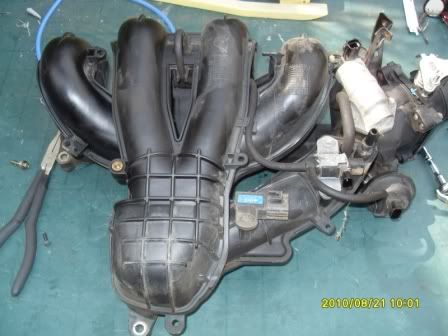
D20, this only has the Tumble Flaps, there is a single vac actuator and solenoid located under the TB.

D23, wider in the middle to make room for the Runner Controls
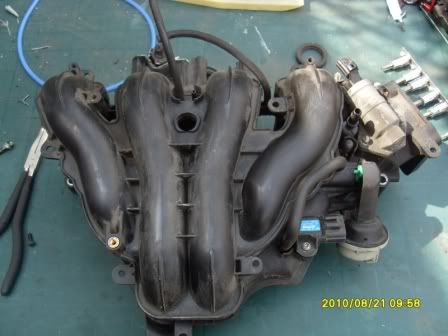
D23, may have only Runner Control or could have Tumble Flaps also.
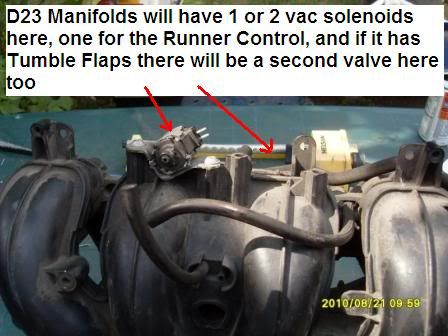
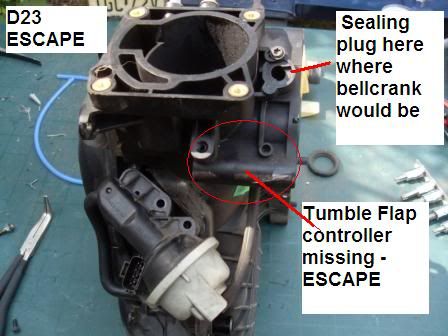
These are shots of where the Tumble Flaps would be. The first pic is after existing Tumble Flaps were deleted, leaving the holes in the runner where the shaft would normally pass through.
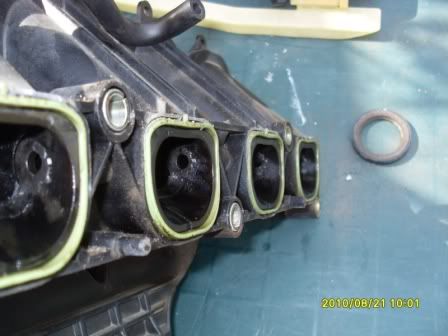
This one is from a D23 Escape which was not mfg with tumble flaps so the runners have no holes in them.
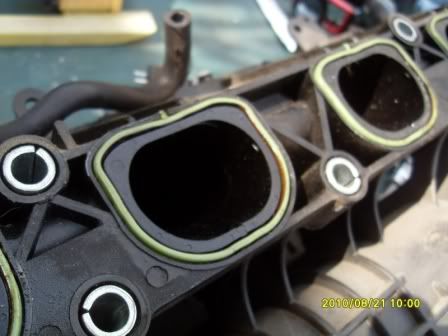
Final techincal notes. Since I was doing lots of computer simulations for my engine build, I needed to get accurate runner dimensions/lengths.
This is what I came up with.
The ports are ovals and have a width of 1.9" and height of 1.3". This yields a CSA of just over 2 square inches. This appears to be the same for all 3 manifolds.
The D20 has a single intake runner path approx 14" long.
The D23 with the Runner Control flap has 2 paths through the manifold with the long path being approx 17" long, and the short path being approx 11" long.
All runner lengths were calculated from the parting face where the manifold meets the head to the point where the individual runner meets the common plenum chamber in the manifold, measured through the approximate center of the runner.









